|
San Diego City and County Historic Designations
By Ann Jarmusch
September/October 2022
At the July 2022 meeting of the City of San Diego Historical Resources Board, two houses were designated. Due to low member attendance, the election of board officers and mandatory ethics training were postponed until the August meeting. Two designation nominations were also postponed until August and September. Staff members announced plans to hire one or two associate planners for historic preservation and reported progress on developing web-based applications for Individual Historic Nominations and Mills Act contracts. Staff is also working on several community plan updates, including three with “substantial historic preservation components.”
Surprised by a July 21, 2022 San Diego Union-Tribune article How to solve a middle-class housing shortage? San Diego bets on reforms, incentives that reported the city may spur middle-class housing construction with several reforms, such as “softer rules for removing historic structures,” HRB members questioned the staff about official support for and the future of their preservation mission. Kelley Stanco, who has worked for the city and with the board on historical resources for more than two decades, said this and other proposals came from Mayor Todd Gloria’s middle-income working group of outside experts. She said that if “softer rules” were to come under serious consideration, the proposal would come before the HRB. (Stanco was recently promoted to deputy director of the Planning Department’s Environmental Policy and Public Spaces Division, which includes historic preservation planning.)
The board designated the following houses: |
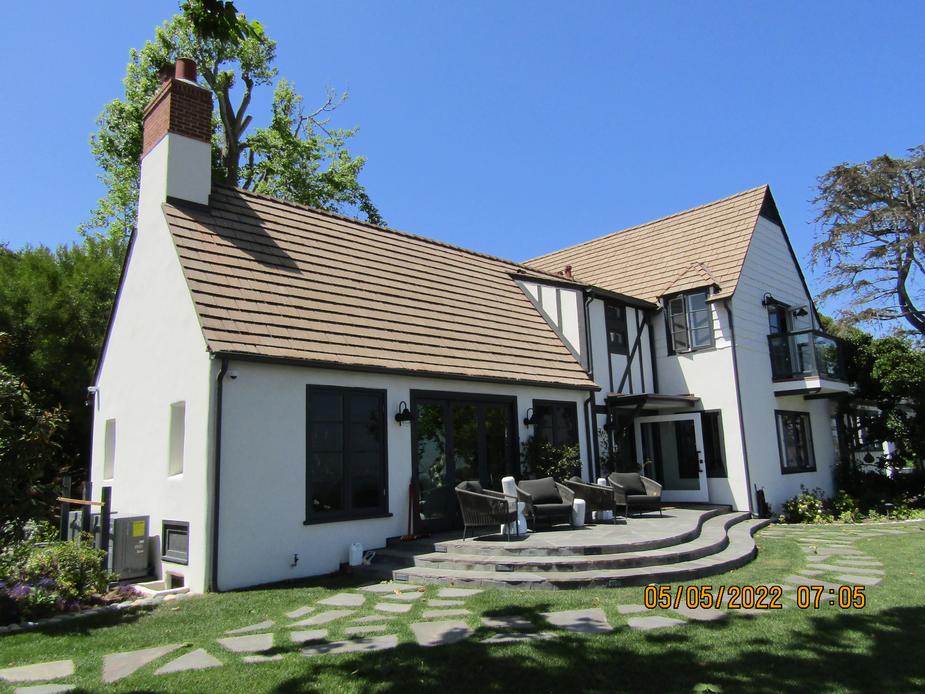 414 La Crescentia Drive in the Peninsula Community was the primary residence of Joseph E. Jessop, Sr., built in the Tudor style with a period of significance of 1929-1970. Jessop was a well-known San Diego civic leader and executive of J. Jessop Jeweler, who built the home and lived here until 1996. It is designated under Criterion B for its association with a historically prominent person. Among Jessop’s many civic contributions are leadership in revitalizing downtown, founding and serving as president of the San Diego Maritime Museum, helping to obtain the Star of India historic sailing ship for San Diego; founder of the Whittier Institute for Diabetes and Endocrinology at Scripps Memorial Hospital in La Jolla; an influential member of the committee that planned and developed Mission Bay into the world's largest aquatic park; and chairman of the First National Bank’s executive committee from 1943 until his retirement in 1968. The designation excludes the detached, modified 1929 garage; the converted 1951 garage; the detached pool house/shed; the 2019 pool/covered patio structure; and the 2020-2021 additions to the residence. 414 La Crescentia Drive in the Peninsula Community was the primary residence of Joseph E. Jessop, Sr., built in the Tudor style with a period of significance of 1929-1970. Jessop was a well-known San Diego civic leader and executive of J. Jessop Jeweler, who built the home and lived here until 1996. It is designated under Criterion B for its association with a historically prominent person. Among Jessop’s many civic contributions are leadership in revitalizing downtown, founding and serving as president of the San Diego Maritime Museum, helping to obtain the Star of India historic sailing ship for San Diego; founder of the Whittier Institute for Diabetes and Endocrinology at Scripps Memorial Hospital in La Jolla; an influential member of the committee that planned and developed Mission Bay into the world's largest aquatic park; and chairman of the First National Bank’s executive committee from 1943 until his retirement in 1968. The designation excludes the detached, modified 1929 garage; the converted 1951 garage; the detached pool house/shed; the 2019 pool/covered patio structure; and the 2020-2021 additions to the residence.
|
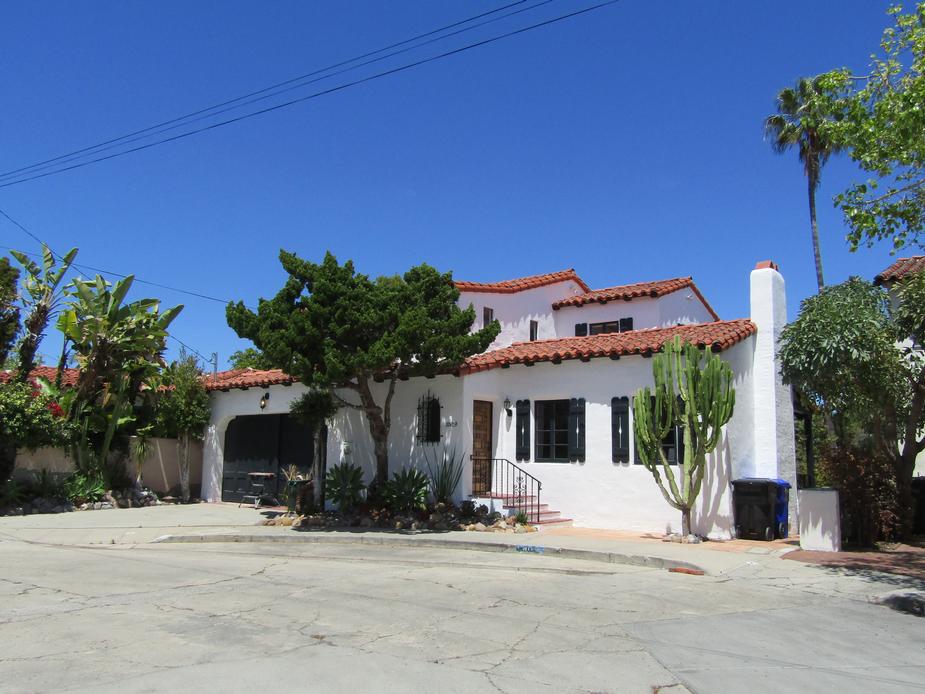 3529 Dove Court in the Uptown Community is a Spanish Eclectic style home built in 1930. The Harry and Blanche A. Muns Speculation House qualifies for designation under Criterion C, for outstanding representation of an architectural style. Specifically, the resource features an asymmetrical front facade; hipped, gabled, and shed roof; Mission half-barrel tile roof; medium textured stucco wall surfacing; deep inset wood casement windows; an arched window; original barn-style sliding garage doors; wooden plank-style window shutters, lathe-turned spindles, interior open beam-wood ceiling with shaved slivers made by an adze; and interior stairs with polychrome floor tiles and wrought metal banister. The designation includes the interior stairs, banister, and open beam ceilings in the living and dining rooms. 3529 Dove Court in the Uptown Community is a Spanish Eclectic style home built in 1930. The Harry and Blanche A. Muns Speculation House qualifies for designation under Criterion C, for outstanding representation of an architectural style. Specifically, the resource features an asymmetrical front facade; hipped, gabled, and shed roof; Mission half-barrel tile roof; medium textured stucco wall surfacing; deep inset wood casement windows; an arched window; original barn-style sliding garage doors; wooden plank-style window shutters, lathe-turned spindles, interior open beam-wood ceiling with shaved slivers made by an adze; and interior stairs with polychrome floor tiles and wrought metal banister. The designation includes the interior stairs, banister, and open beam ceilings in the living and dining rooms.
|
At the August 2022 meeting, the HRB elected attorney Tim Hutter as the new chairperson, succeeding landscape architect David McCullough. Kristi Byers, an architect, is now the first vice chair, and Michael Taylor, an archaeologist, is the second vice chair. Members learned that the September 22, 2022 meeting will be held in person and virtually, and they completed the city’s required ethics training. Staff presented an informational overview on the Mira Mesa Community Plan update, which will return to the board for its first formal review in October.
The HRB also designated four resources. Three were early 20th-century residences that sailed through on the consent agenda; the fourth, The North Parker/Jonathan Segal Building, completed in 2014, was more challenging.
|
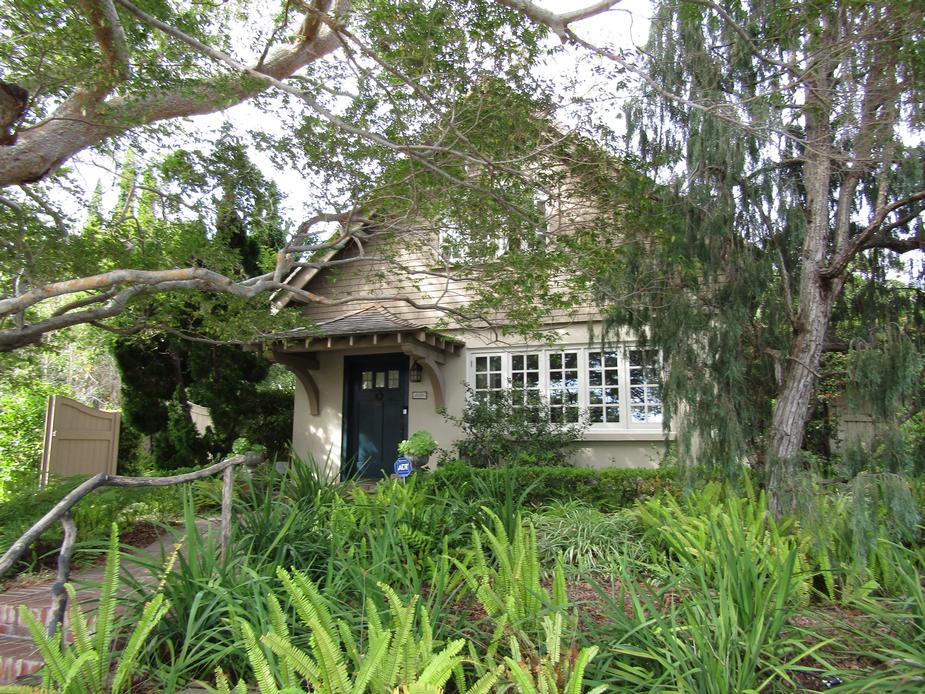 3353 Goldsmith Street in the Peninsula Community is a two-story Craftsman style home built in 1914 by Allie A. Knox as a speculation house. It is designated for Criterion C, as it continues to convey the historic significance of the Craftsman style by embodying the historic characteristics associated with the style. These include a cross-gable roof form, wood roof shingles, exposed roof rafters, exposed beams, shed dormers, stucco and wood shingle cladding, and various fixed and casement windows. The designation excludes the detached garage/guest house constructed 1922 and later modified. 3353 Goldsmith Street in the Peninsula Community is a two-story Craftsman style home built in 1914 by Allie A. Knox as a speculation house. It is designated for Criterion C, as it continues to convey the historic significance of the Craftsman style by embodying the historic characteristics associated with the style. These include a cross-gable roof form, wood roof shingles, exposed roof rafters, exposed beams, shed dormers, stucco and wood shingle cladding, and various fixed and casement windows. The designation excludes the detached garage/guest house constructed 1922 and later modified.
|
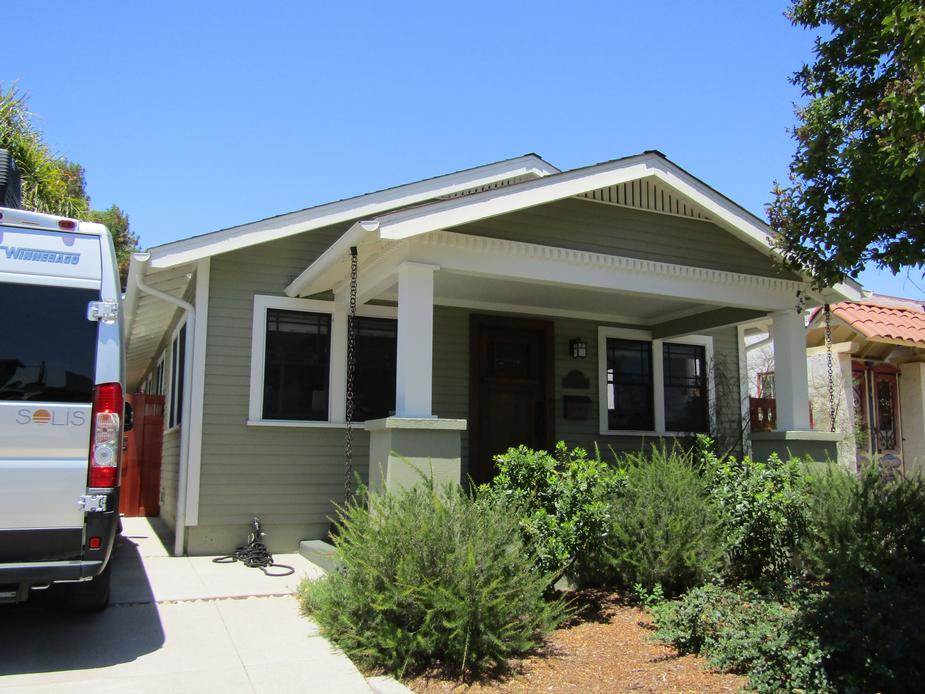 3116 McKinley Street in the North Park Community, named the Omar and Sarah Gray House, is a Craftsman bungalow with a period of significance of 1926. Designated under Criterion C, it embodies the distinctive characteristics through the retention of character-defining features of the Craftsman style and integrity from 1926. Specifically, the house the Grays built for themselves features a double-gabled form, low-pitched roof, partial width front porch, wood columns and stucco piers, decorative dentil cornice, vertical slat attic vents, exposed rafters, horizontal wood siding, and nine-light double hung windows. The designation excludes the 2019 attached rear addition and the detached garage/Accessory Dwelling Unit constructed outside the period of significance. 3116 McKinley Street in the North Park Community, named the Omar and Sarah Gray House, is a Craftsman bungalow with a period of significance of 1926. Designated under Criterion C, it embodies the distinctive characteristics through the retention of character-defining features of the Craftsman style and integrity from 1926. Specifically, the house the Grays built for themselves features a double-gabled form, low-pitched roof, partial width front porch, wood columns and stucco piers, decorative dentil cornice, vertical slat attic vents, exposed rafters, horizontal wood siding, and nine-light double hung windows. The designation excludes the 2019 attached rear addition and the detached garage/Accessory Dwelling Unit constructed outside the period of significance.
|
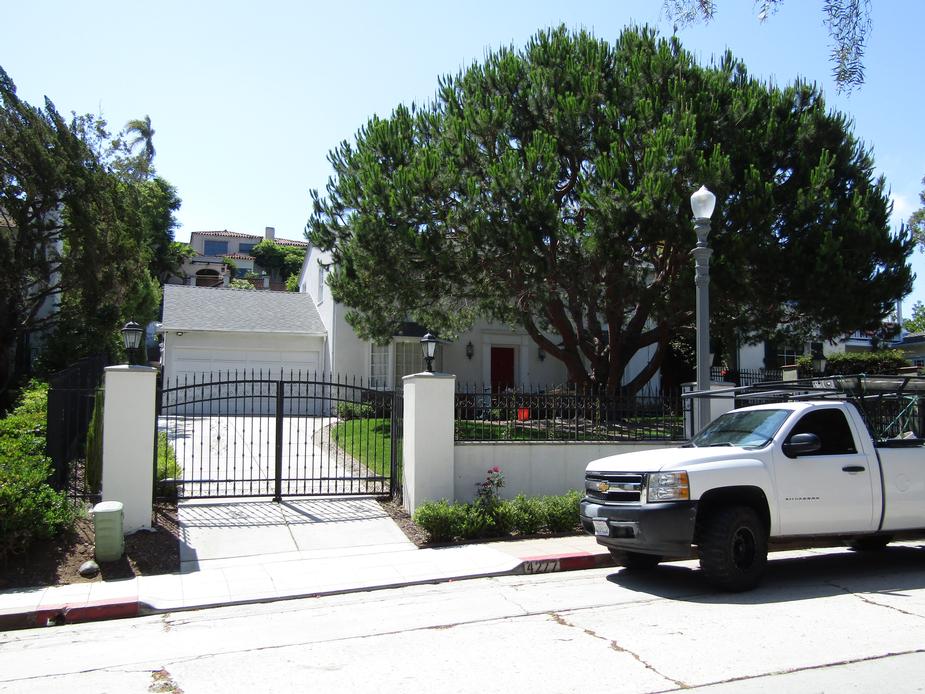 4277 Cosoy Way in Mission Hills is the John and Zelda Schelling/William Wahrenberger House, designated as a Colonial Revival style residence with a period of significance of 1936. It is designated under Criterion C, for embodiment of its architectural style. Character-defining features include a side gable roof, two-story massing with attached garage, symmetrical front facade, elaborated door surround, paneled front door and entryway, brick veneer detailing, bay windows, multi-light wooden windows, louvered wooden shutters and end brick chimney. It is also designated under Criterion D, for Master Builder William Wahrenberger. Although Wahrenberger designed many houses considered highly livable, his occupation is listed as contractor and he never obtained an architect’s license. Hallmarks of his work are high-quality design and solid functional construction that used appropriate detailing and built-ins, and openings that introduced natural light into each house’s interior. The designation excludes the 1940s-1950s rear second-story addition, the 1970 rear addition, and the detached rear guest house. 4277 Cosoy Way in Mission Hills is the John and Zelda Schelling/William Wahrenberger House, designated as a Colonial Revival style residence with a period of significance of 1936. It is designated under Criterion C, for embodiment of its architectural style. Character-defining features include a side gable roof, two-story massing with attached garage, symmetrical front facade, elaborated door surround, paneled front door and entryway, brick veneer detailing, bay windows, multi-light wooden windows, louvered wooden shutters and end brick chimney. It is also designated under Criterion D, for Master Builder William Wahrenberger. Although Wahrenberger designed many houses considered highly livable, his occupation is listed as contractor and he never obtained an architect’s license. Hallmarks of his work are high-quality design and solid functional construction that used appropriate detailing and built-ins, and openings that introduced natural light into each house’s interior. The designation excludes the 1940s-1950s rear second-story addition, the 1970 rear addition, and the detached rear guest house.
|
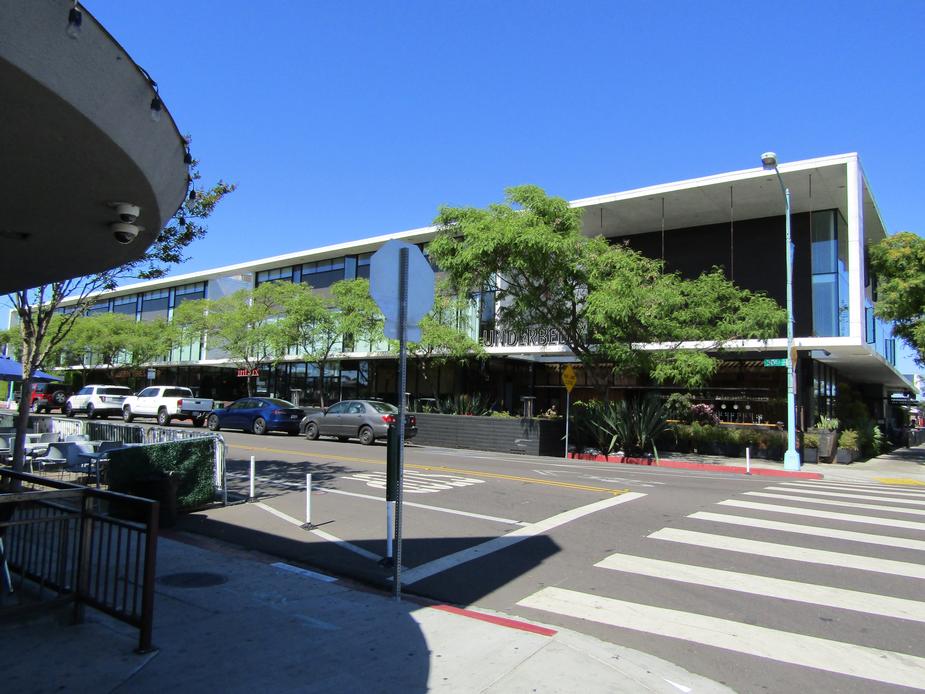 3000 Upas Street in North Park is a 2014 contemporary style residential building designed and constructed by Master Architect and Builder Jonathan Segal to transform an entire city block. It is highly unusual to designate a building before it is 45 years old in San Diego, or, in other places, 50 years old, yet San Diego’s preservation ordinance does not require the 45-year threshold. The North Parker/Jonathan Segal Building is emblematic of Segal’s innovative urban work and has SOHO’s support for designation. In 2021, the HRB set a precedent for “early” designation when it added Segal’s Mr. Robinson mixed-use project in Hillcrest to the city’s historic landmarks, despite staff opposition. At that same February 2021 meeting, the board named Segal a master architect and a master builder. In both cases, architect and preservationist Charles Kaminski challenged the designations, saying both designs may well have exceptional merit, but that more years need to go by to provide perspective on their significance. Read “50 Years Reconsidered” from the National Trust for Historic Preservation. This time, the staff supported designating the North Parker. The board ultimately decided the North Parker did meet the criteria and all but one voted to designate it and assigned the complex issue to its policy subcommittee for future board consideration. 3000 Upas Street in North Park is a 2014 contemporary style residential building designed and constructed by Master Architect and Builder Jonathan Segal to transform an entire city block. It is highly unusual to designate a building before it is 45 years old in San Diego, or, in other places, 50 years old, yet San Diego’s preservation ordinance does not require the 45-year threshold. The North Parker/Jonathan Segal Building is emblematic of Segal’s innovative urban work and has SOHO’s support for designation. In 2021, the HRB set a precedent for “early” designation when it added Segal’s Mr. Robinson mixed-use project in Hillcrest to the city’s historic landmarks, despite staff opposition. At that same February 2021 meeting, the board named Segal a master architect and a master builder. In both cases, architect and preservationist Charles Kaminski challenged the designations, saying both designs may well have exceptional merit, but that more years need to go by to provide perspective on their significance. Read “50 Years Reconsidered” from the National Trust for Historic Preservation. This time, the staff supported designating the North Parker. The board ultimately decided the North Parker did meet the criteria and all but one voted to designate it and assigned the complex issue to its policy subcommittee for future board consideration.
|
City of Coronado Designations
In August, the Coronado Historic Resources Commission designated the following historic landmarks. In accordance with the municipal code, to be designated each landmark must be at least 75 years old and meet two or more of five criteria. |
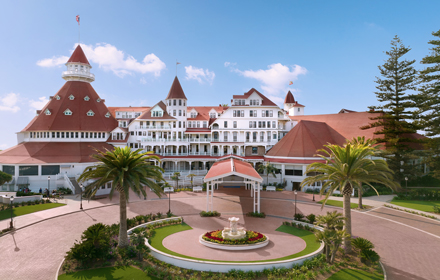 Hotel del Coronado Victorian Building, 1500 Orange Avenue, and its industrial buildings, including the Laundry Building, Smoke Stack, Ice House, and Power Plant. The hotel, which opened in 1888, is undergoing restoration and the accessory buildings have been restored and/or adapted for new uses in recent years. They are designated under Criterion A for exemplifying special elements of Coronado’s cultural, economic, social, architectural, and engineering history; and Criterion B for association with persons significant in local, state, and national history. The hotel and its industrial buildings are also designated under Criterion C for embodying Victorian seaside architecture that has not been substantially altered; and under Criterion D as an outstanding example of the work of architect James Reid of Reid Brothers architecture firm. The Hotel del Coronado Victorian Building, but not the industrial buildings, also meets Criterion E, for being listed on the California Register of Historic Places. Courtesy the Hotel del Coronado Hotel del Coronado Victorian Building, 1500 Orange Avenue, and its industrial buildings, including the Laundry Building, Smoke Stack, Ice House, and Power Plant. The hotel, which opened in 1888, is undergoing restoration and the accessory buildings have been restored and/or adapted for new uses in recent years. They are designated under Criterion A for exemplifying special elements of Coronado’s cultural, economic, social, architectural, and engineering history; and Criterion B for association with persons significant in local, state, and national history. The hotel and its industrial buildings are also designated under Criterion C for embodying Victorian seaside architecture that has not been substantially altered; and under Criterion D as an outstanding example of the work of architect James Reid of Reid Brothers architecture firm. The Hotel del Coronado Victorian Building, but not the industrial buildings, also meets Criterion E, for being listed on the California Register of Historic Places. Courtesy the Hotel del Coronado
|
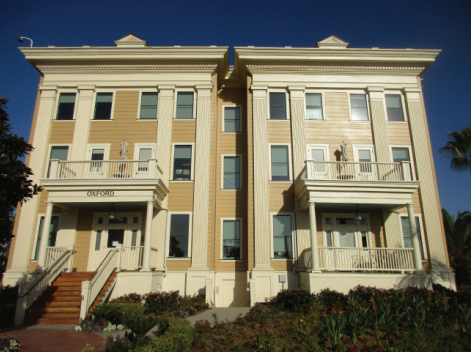 Oxford Hotel, on the Hotel del Coronado property. This much-altered, modified Greek Revival structure from 1887 predates the Hotel del Coronado and is one of the city’s first commercial buildings. It is designated under Criterion A for reflecting aspects of Coronado’s economic, social, and cultural history, specifically the dawn of local preservation activism in the late 1980s, which led to the city’s historic preservation ordinance. Courtesy Coronado Historical Association Oxford Hotel, on the Hotel del Coronado property. This much-altered, modified Greek Revival structure from 1887 predates the Hotel del Coronado and is one of the city’s first commercial buildings. It is designated under Criterion A for reflecting aspects of Coronado’s economic, social, and cultural history, specifically the dawn of local preservation activism in the late 1980s, which led to the city’s historic preservation ordinance. Courtesy Coronado Historical Association
|
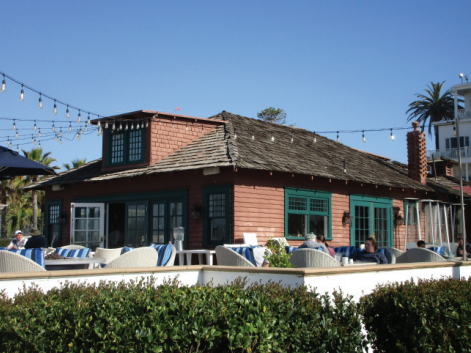 Windsor Cottage, on the Hotel del Coronado property, is a Craftsman bungalow that has been moved and altered. It is designated for Criteria A, because it represents special elements of the community’s historic preservation activism of the late 1980s, before Coronado enacted its preservation ordinance. Criterion B also applies for the cottage’s association with Wallis Simpson, who later became the Duchess of Windsor, and with the pioneering pilot Navy Lieutenant Commander Earl Winfield Spencer, Jr., who was Simpson’s first husband. Courtesy Coronado Historical Association Windsor Cottage, on the Hotel del Coronado property, is a Craftsman bungalow that has been moved and altered. It is designated for Criteria A, because it represents special elements of the community’s historic preservation activism of the late 1980s, before Coronado enacted its preservation ordinance. Criterion B also applies for the cottage’s association with Wallis Simpson, who later became the Duchess of Windsor, and with the pioneering pilot Navy Lieutenant Commander Earl Winfield Spencer, Jr., who was Simpson’s first husband. Courtesy Coronado Historical Association
|
All photos are from the California Historical Resources Inventory Database (CHRID), except where noted otherwise. The above designations were reviewed and approved by the City of San Diego Historical Resources Board (HRB), the County of San Diego Historic Site Board (HSB), or the Coronado Historic Resources Commission.
|
2025
2024
2023
2022
2021
2020
2019
2018
2017
2016
2015
|












